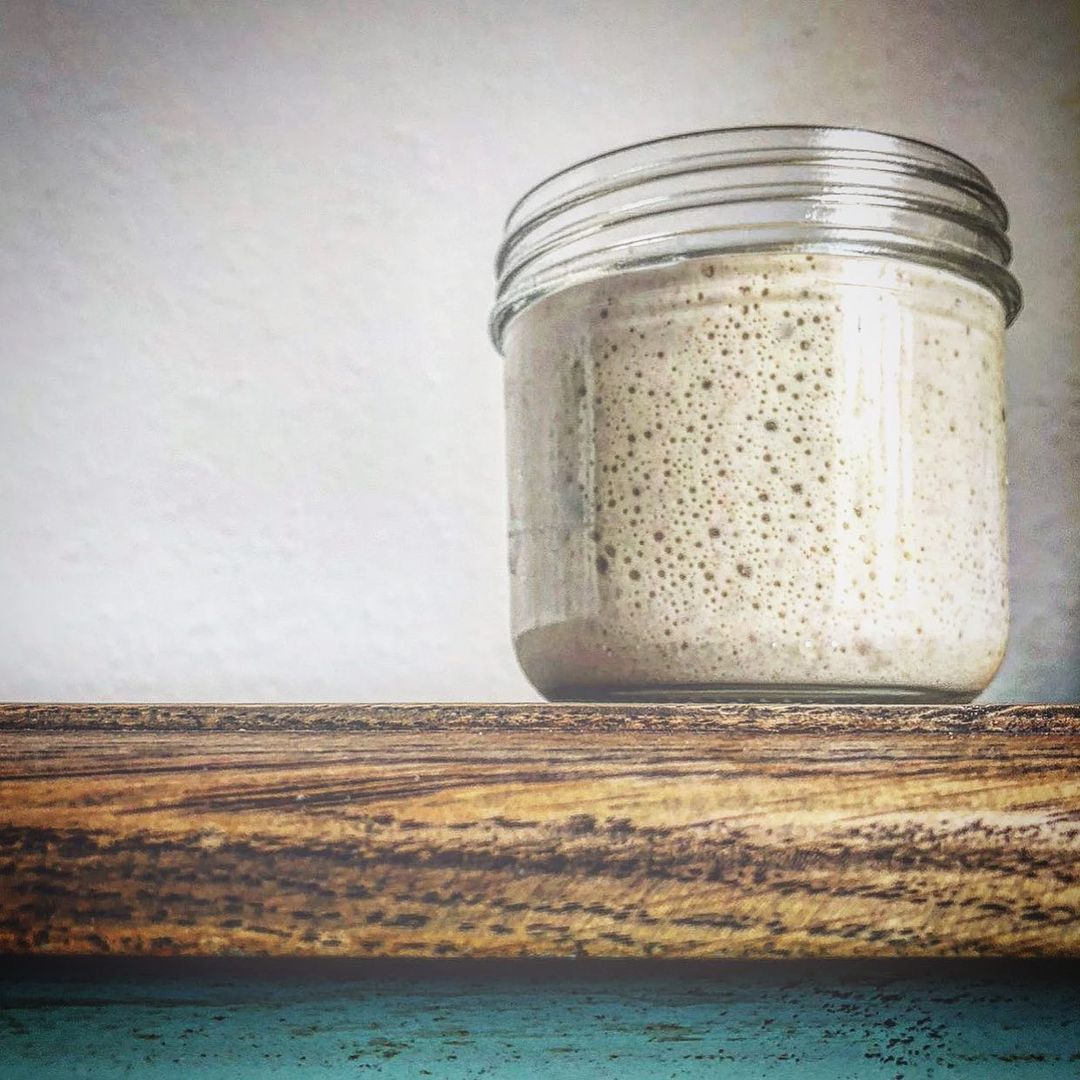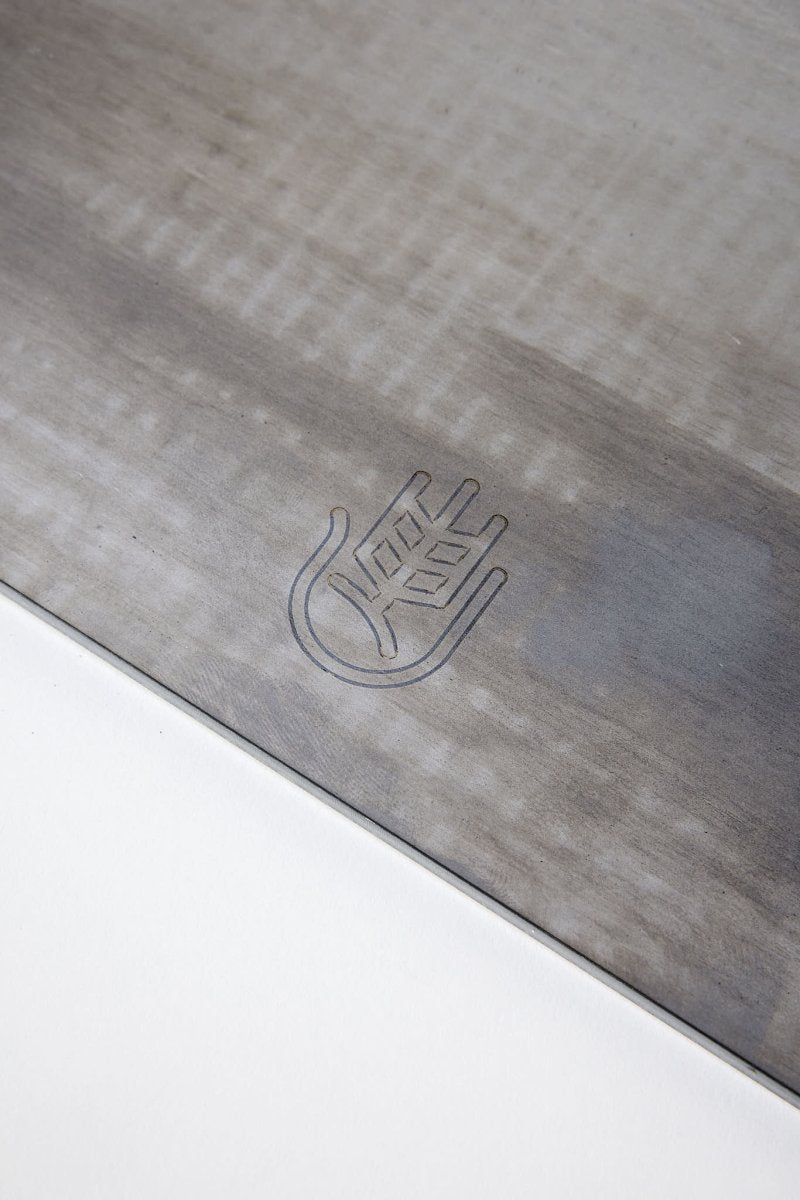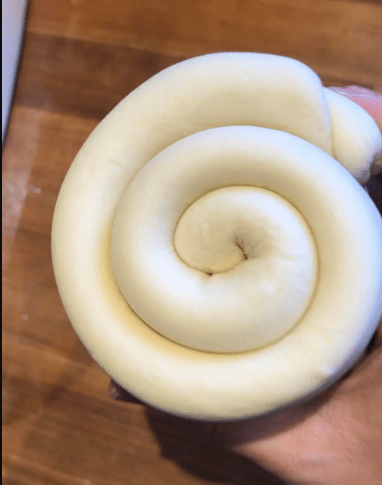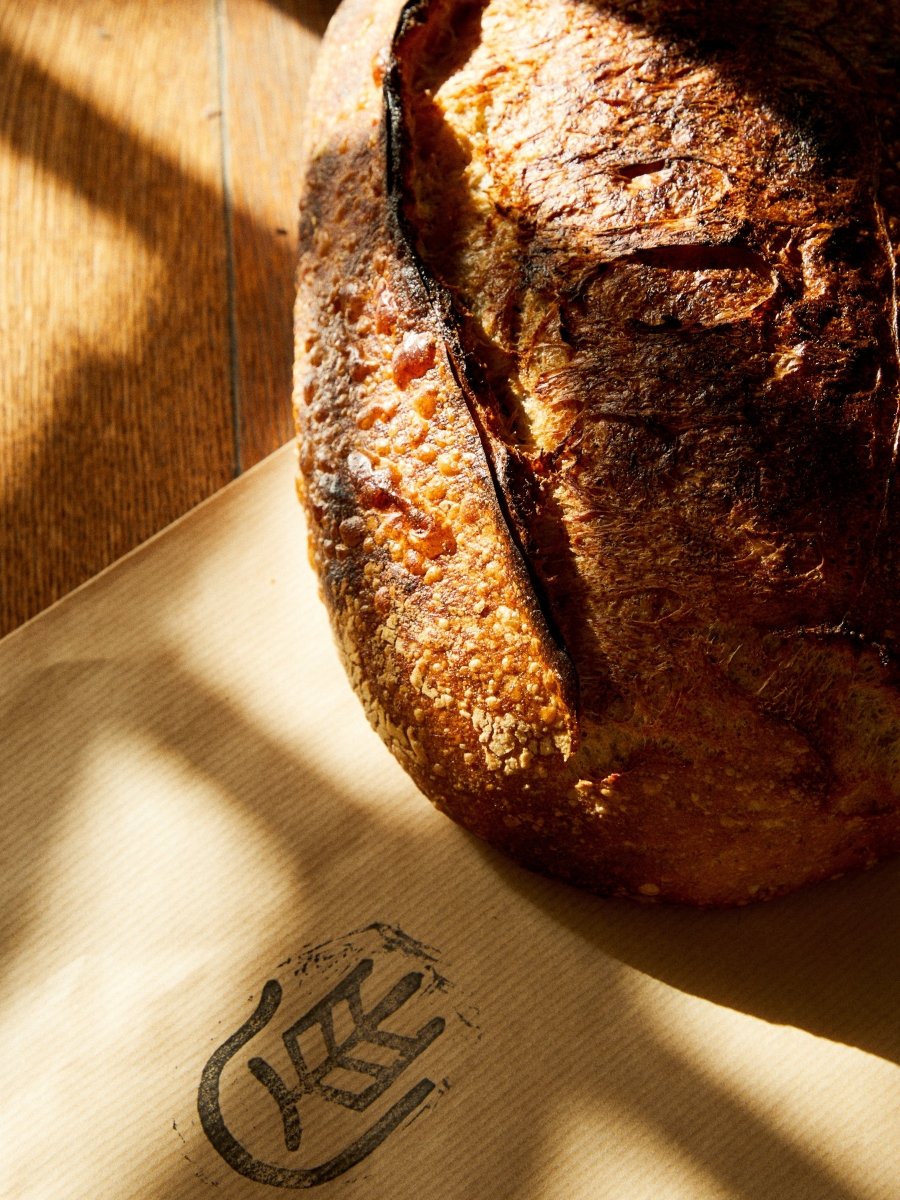På Simpel Surdej erbjuder vi ett brett utbud av produkter för surdegsbakning, från jäskorgar och degskrapor till brödlammar och mjölpenslar. I den här artikeln kommer vi att guida dig genom grunderna för surdegstillverkning och dela med oss av några tips och tricks som hjälper dig att skapa den perfekta limpan.
Processen att göra surdeg

Surdeg är en blandning av mjöl och vatten som får jäsa och jäsa naturligt, med hjälp av vilda jästsvampar och bakterier som finns i miljön. För att skapa din egen surdegsstartare behöver du:
- En ren burk eller behållare
- Mjöl
- Vatten
Börja med att blanda lika delar mjöl och vatten i burken och rör om ordentligt. Du kan använda vilken typ av mjöl som helst, men fullkorns- eller rågmjöl brukar fungera bäst, eftersom de innehåller mer naturliga jästsvampar och bakterier. Täck burken löst med ett lock eller trasa och låt den stå i rumstemperatur i 24 timmar.
Efter första dagen bör du börja se små bubblor bildas på ytan av blandningen, vilket gör att jäsningen har börjat. Mata surdegen genom att slänga hälften av blandningen och tillsätta färskt mjöl och vatten i lika delar. Upprepa denna process varje dag i en vecka, eller tills surdegen är aktiv och bubblig.
Underhåll din surdegsförrätt
När din surdeg är aktiv kan du använda den för att göra bröd, pannkakor, våfflor och många andra läckra bakverk. Men för att hålla den frisk och levande måste du underhålla den regelbundet. Här är några tips för att ta hand om din surdegsförrätt:
-
Mata den regelbundet: Beroende på hur ofta du använder din surdeg, måste du mata den varje dag eller med några dagars mellanrum. Den allmänna regeln är att kassera hälften av blandningen och tillsätt färskt mjöl och vatten i lika delar. Detta kommer att hålla surdegen fräsch och aktiv.
-
Förvara den ordentligt: Surdeg kan förvaras i kylen eller i rumstemperatur, beroende på hur ofta du använder den. Bakar du bröd varje dag kan du lämna det i rumstemperatur, men bakar du mer sällan är det bättre att förvara det i kylen. Kom bara ihåg att mata den regelbundet, även om den står i kylen.
-
Använd en våg: Surdegsbakning kräver exakta mått på mjöl och vatten, så det är viktigt att använda en våg för att säkerställa noggrannheten. Vi rekommenderar MyWeight KD-8000 digitalvåg , som har en bakarprocentfunktion och kan mäta upp till 8 kg.
Fördelarna med surdegsbröd

Surdegsbröd är inte bara gott, utan det har också många hälsofördelar. Här är några av anledningarna till varför du bör byta till surdeg:
-
Lättare matsmältning: Surdeg innehåller probiotika och enzymer som hjälper till att bryta ner gluten och andra komplexa kolhydrater, vilket gör det lättare för kroppen att smälta. Det betyder att personer med glutenkänslighet eller matsmältningsproblem kan tolerera surdeg bättre än andra typer av bröd.
-
Lägre glykemiskt index: Surdeg har ett lägre glykemiskt index än kommersiellt bröd, vilket innebär att det släpper ut glukos långsammare i blodomloppet och undviker blodsockerstoppar och kraschar.
-
Mer näringsämnen: Surdegsbröd är rikare på vitaminer och mineraler, eftersom jäsningsprocessen ökar biotillgängligheten av näringsämnen och bryter ner antinäringsämnen som fytinsyra.
Tips och knep för surdegsbakning

Surdegsbakning kräver övning och tålamod, men med dessa tips och tricks kan du förbättra dina färdigheter och skapa fantastiskt bröd:
-
Använd mjöl av hög kvalitet: Kvaliteten på mjölet du använder kommer att påverka smaken och konsistensen på ditt bröd, så det är värt att investera i ett bra varumärke. På Simpel Surdej erbjuder vi ett urval av ekologiska och stenmalda mjöl, såsom Type 00 Hvedemel och Kornby Mølle Purpurhvede Nr. 3 .
-
Använd ett bakstål eller -sten: Ett bakstål eller -sten hjälper till att fördela värmen jämnt och skapa en krispig skorpa. Vi rekommenderar Baking Steel , som är tillverkat av högkvalitativt stål och tål höga temperaturer.
-
Använd en bänkkniv eller skrapa: En bänkkniv eller skrapa är ett viktigt verktyg för surdegsbakning, eftersom det hjälper dig att forma och skära degen. Vi erbjuder bänkkniven ek och degskrapan , som båda är gjorda av högkvalitativa material och kan hålla i flera år.
-
Använd en jäskorg: En jäskorg, även känd som en banneton, är en speciell korg som används för att forma och jäsa degen. Det skapar ett vackert mönster på skorpan och hjälper brödet att hålla formen. Vi erbjuder en mängd olika korgar, såsom den ovala våffelkorgen och den runda korgen .
-
Använd en brödhalt: En brödhalt är ett specialverktyg som används för att göra snitt på degen innan bakning. Det låter brödet expandera utan att gå sönder och skapar en vacker design på skorpan. Vi erbjuder Bread Lame Ash och Bread Lame Smoked Oak , som båda är handgjorda och unika.
Slutsats
Surdegsbakning är en givande och läcker hobby som kan förbättra din hälsa och imponera på dina vänner och familj. Genom att följa tipsen och använda rätt verktyg kan du skapa fantastiskt bröd och uttrycka din kreativitet. På Simpel Surdej brinner vi för surdeg och erbjuder ett brett utbud av produkter som hjälper dig på din resa. Prova vår infraröda termometer för exakta temperaturavläsningar, vår Canelé kopparform för snygga desserter eller vår rågbrödsform för äkta danskt rågbröd. Glad bakning!
Vanliga frågor
Hur lång tid tar det att göra surdegsbröd?Processen att göra surdegsbröd kan ta allt från 12 till 24 timmar, beroende på receptet och temperaturen. Men det mesta av tiden går åt till att vänta på att brödet ska jäsa och jäsa, så du behöver inte arbeta aktivt med det hela tiden.
Behöver jag specialutrustning för att göra surdegsbröd?Även om du kan baka surdegsbröd med grundläggande köksredskap, kan det göra processen enklare och effektivare med viss specialutrustning. På Simpel Surdej erbjuder vi en mängd olika verktyg och tillbehör som hjälper dig att baka den perfekta limpan, som jäskorgar, brödlammar och degskrapor.
Kan jag använda kommersiell jäst istället för surdeg?Även om du kan använda kommersiell jäst för att göra bröd, kommer den inte att ha samma smak och konsistens som surdegsbröd. Kommersiell jäst är en enskild jäststam som jäser snabbt och ger en enhetlig smak, medan surdeg innehåller en mängd olika vilda jäster och bakterier som skapar en komplex och unik smak.
Kan jag frysa surdegsbröd?Ja, du kan frysa surdegsbröd i upp till 3 månader. För att tina den, låt den stå i rumstemperatur i några timmar eller värm upp den i ugnen.
Vilket är det bästa mjölet att använda till surdegsbröd?Du kan använda vilken typ av mjöl som helst för att göra surdegsbröd, men fullkorns- och rågmjöl brukar fungera bäst, eftersom de innehåller mer naturliga jästsvampar och bakterier. På Simpel Surdej erbjuder vi ett urval av ekologiska och stenmalda mjöl, såsom Mejnerts Mølle Ølandshvedemel Fuldkorn och Kornby Mølle Hvedemel Nr. 2 .
Hur lång är hållbarheten på surdegsbröd? Surdegsbröd har längre hållbarhet än andra brödsorter eftersom den naturliga syran från jäsningsprocessen hjälper till att bevara den. Det kan vanligtvis hålla i upp till en vecka om det förvaras på rätt sätt.
Kan jag göra glutenfritt surdegsbröd?
Ja, du kan göra glutenfri surdeg genom att använda glutenfria mjöl som rismjöl, majsmjöl och potatismjöl. På Simpel Surdej erbjuder viekologiskt rismjöl och glutenfritt typ-00 mjöl från Mejnerts Mølle. De är perfekta för att göra glutenfritt surdegsbröd.






Dela på sociala medier:
Forma surdegslimpor
Den ultimata guiden till surdegsstarttips, tricks och felsökning